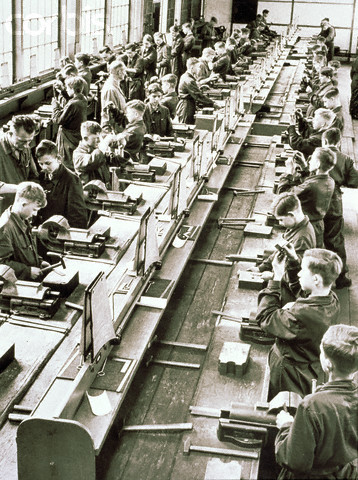


As some American scholars continue to drag their feet, preferring to hunker in their bunker of familiar disciplinary and practical entrenchments, the exciting rush of the Digital Revolution reminds us that the wisdom of Ralph Waldo Emerson continues to shine through the smoke of battle with practical pedagogical insights that demonstrate an increasing relevance in the digital age. Though bold thinkers and creative educators like Sir Ken Robinson are beginning to re-assess traditional pedagogical perspectives & practices, the rusty residues of the Industrial Revolution continue to stain and restrain the eager minds of our students who often arrive full of enthusiastic hopes for a humane educational experience only to be disappointed by increasingly mechanistic and inflexible institutions that are unconsciously shaped by a kind of educational Taylorism.

In his “American Scholar” address to the Phi Beta Kappa Society of Cambridge in 1837, Emerson writes “Perhaps the time is already come…when the sluggard intellect of this continent will look from under its iron lids, and fill the postponed expectation of the world with something better than the exertions of mechanical skill.” Here Emerson seems to be suggesting that America has much more to offer than physical manufacturing and industrial development. But in the digital age, a re-ordering of his last four words here might suggest a more relevant contemporary hope for something greater than mechanical production. Emerson had not seen Ford’s mass production assembly line, but his emphasis in this essay and in “Self-Reliance” indicate his awareness of the dangers of homogenizing conformity and robotic (re)production when it comes to learning.
In his address, Emerson mentions “laborious reading” and seems to anticipate the objections of traditionalist complaints about the risks of reduced rigor whenever anyone strays from strict disciplinary boundaries and practices. Radically, Emerson argues that a college education should involve something more important and inspiring than mere content delivery, mechanical productions or laborious achievements:
“Of course, there is a portion of reading quite indispensable to a wise man. History and exact science he must learn by laborious reading. Colleges, in like manner, have their indispensable office,–to teach elements. But they can only highly serve us, when they aim not to drill, but to create; when they gather from far every ray of various genius to their hospitable halls, and, by the concentrated fires, set the hearts of their youth on flame.”
Yet if we polled students across the country, I would bet that the group of students with a glowing passion for learning would be relatively small. Perhaps we could call this the “enthusiasm gap” – that gulf between the lofty educational hopes of our students and their dull and sometimes humiliating encounters with the dry, distant, “rigor” of an outmoded or unplanned pedagogy that often crushes those hopes. Sometimes the authoritative deployment of the word “rigor” can be an excuse for petty meanness or simply a distraction from a more serious intellectual and creative rigor mortis that can develop in a protected and powerful elite. This is a “rigor” that will never enkindle the flames of enthusiastic learning or evoke a desire for education.
The etymology of “educate” includes the idea of drawing forth or drawing out of a student his particular genius, it is not simply the disciplinary stamping and rigid reproduction of pre-approved perspectives and forms of expression. It’s not hard for students to recognize the disconnect between institutional lip-service to values like “free expression” and “passion for learning” and the stifling realities of their everyday experience.
Many students desperately want to learn, but they rightfully resist a high-pressure non-stop assembly line approach to teaching that cranks out slick but somewhat identical mechanical productions devoid of genuine student input and engagement. Some of these students accept their disillusionment and re-group to successfully “play the game,” but other students drop out – or worse.
It seems that good old Emerson was way ahead of the curve when it comes to pedagogical insight and in our digital age, his ideas are more relevant than ever.
Keep in mind those “teacherless classes” in Florida. Could Peter Elbow’s revolutionary impulses from his books on writing be co-opted by budget-cutters intent of having monitored students in self-paced computer labs? See:
http://www.nytimes.com/2011/01/18/education/18classrooms.html?pagewanted=all
At college, too often our students love the assembly line. How do we counter that?
Not only has technology brought us teacherless online classes, the Japanese are deploying robot teachers in grade schools (check YouTube) but I wonder what the result of exposure to such mechanical predictability will be on the minds of students?
In The Chronicle of Higher Education, Sharon Marshall suggests a balance: “The flip side of technophobia is the kind of unexamined technophilia that welcomes everything new and different, whether or not it improves life or teaching, or the lives of students and teachers. I want to find a place, a stance, somewhere in between, a both/and strategy that allows my students and me to, dare I say it, extract the best of both worlds.”
http://chronicle.com/article/More-Face-to-Face-Less/126163/
As always, a thoughtful and dynamic balance of online interaction and face-to-face time will serve our students best. Sometimes resistance to digital teaching tools is simply “professional” entrenchment, but a more legitimate resistance comes from those of us who know that something powerful and unique happens when engaged humans gather in proximity and learn together, coached by a skilled teacher. Volumes of qualitative evidence can be gathered from students who have experienced this dynamic. Indeed, such immediate interaction is the foundational teaching technology that has brought us to our present highly developed state.